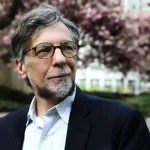By Lawrence Kramer, author of Music and the Forms of Life
The concept of life has a long and complicated history, but its modern version can be said to date to the late seventeenth century. The science of the time launched a concerted effort to discover what made living bodies, particularly human bodies, alive. Did the body’s mechanism suffice, or did bodies require an added life force? If so, where could it be found? The question of life turned out to be a question of physiology.
But it was also a question of music. Scientific writing on life regularly compared the workings of the living body to the workings of musical sound. The action of the nerves, for example, bore a kinship to the vibration of strings, whether on violin or harpsichord. Life was a harmony of bodily organs and processes. The musical metaphors were so persistent that over time they came to hint at something more than metaphorical. The connection thus forged between music and life has itself proved long-lived, at least for music. Music is the art that lives in the present, and not only because it must be played (or played back) to be heard. Writing records life and imagery depicts it, but music seems to have it.
My new book Music and the Forms of Life traces the history of life in music beginning with the late eighteenth century in Vienna, when music began to borrow from life science just as life science had borrowed from music. The music we now know as “classical,” exemplified in famous pieces by Haydn, Mozart, and Beethoven, began to invent sonorous metaphors for the era’s scientific concepts of life. Subsequent developments would extend the metaphors to music in general, so it should come as no surprise that the book starts with musical nerves and viscera and ends with musical DNA.
One dimension of this history that deserves fuller study—my book touches on it briefly—concerns animal life. As we increasingly recognize that nonhuman animals have genuine forms of subjectivity, the musical portrayal of animal life literally takes on new resonance. Music has traditionally dealt with animals by imitating their sound or motion, most often to comic effect. Comic or not, the animal was something to be observed externally; animals had no point of view. In 1725, Georg Philipp Telemann composed an Alster Overture, named for a river near Hamburg. The piece is scored for violin, oboes, bassoons, and four horns, and it makes the most of its brassy and reedy sounds. The seventh of its nine movements is titled “The Concert of Frogs and Crows.” The music mimics the sound of these unlikely duet partners: the crows by sliding semitone figures, the frogs by ribit-ribit-like repetitions of a single note. (Did Telemann know his Aristophanes? From The Frogs: “Brekekekex koaks koaks.” In the play it’s a song.) The cacophony is genial, but, like one of Aesop’s fables, it brings its animals to life mainly to point a moral. The remaining two songs are pastoral idylls, but when heard after the frogs and crows, they may seem too good to be true.
What might be called a prophetic change occurred circa 1849, in Robert Schumann’s enigmatic piano piece “Bird as Prophet.” Schumann generally didn’t “do” animals, so this instance stands out. The opening section and its subsequent return keep to the norm of mimicry, though with a nagging scruple about it. The bird’s repetitive song is plaintive, marked by a harsh initial dissonance that takes its time resolving and keeps on coming back. Is this “song”—it’s quite unsonglike—melancholy only to the human observer or does it belong to the bird as prophet? (And prophet of what?)
The middle section may offer an answer, but it is a mere six measures long — not a “section” at all. It is not clear what it is. Its music is often described as chorale-like, but I’m not so sure. I am sure, though, that this passage is continuous and richly harmonized, that it turns to the major mode from the minor of the framing sections, and that it undergoes a mysterious harmonic shift in its two concluding measures that is unlike anything else in the piece. The feeling here is not one of external observation, and the sound certainly mimics no birdsong. The passage is a revelation and deepening of subjectivity, and the subjectivity, in its mystery, belongs to the bird. The music has found its way to a previously hidden form of life.
Today the life that seems inherent in music may extend still further to the life of ecosystems or even to the life of nature writ large. I’ve tried to make that extension myself in “Ecospheres,” a large work for chamber ensemble. The era of climate change and the Anthropocene seems to demand it, and not only from classical composers like me. The life in music is not just an aesthetic quality. It is a kind of natural resource that adapts to changing times. Every era finds in music the life it needs to hear.

